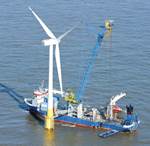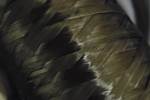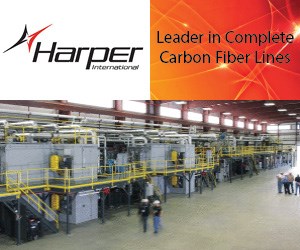A decade of research
Building composite wind turbine towers is not a new idea. For more than a decade, government- and industry-funded projects have explored the possibility of a utility-scale composite tower.
Building composite wind turbine towers is not a new idea. For more than a decade, government- and industry-funded projects have explored the possibility of a utility-scale composite tower. Several composite tower patents have been filed, including two by General Electric (Schenectady, N.Y.) and one by the University of Manitoba (Winnipeg, Canada).
In 2002, Wind Tower Systems (Park City, Utah) conducted a multiyear, U.S. Department of Energy-sponsored research program into the commercialization of lighter, taller towers for utility-scale, multimegawatt turbines. The company, then known as Wind Tower Composites, developed and tested the components of an 80m/262-ft-high tower for a 1.5-MW turbine. Constructed of carbon fiber-reinforced polymer tubes., the resulting Space Frame Tower reportedly reduced tower weight by more than 20 percent and reduced production costs by 25 percent, compared to steel towers. The program ended, however, in 2005, without a commercial product.
In a parallel development, the MEGAWIND project, partially funded by the European Commission and coordinated by the Pikermi, Greece-based Centre for Renewable Energy Sources and Saving, brought together a consortium aimed at developing a megawatt-scale turbine and composite tower for wind farms characterized by high wind speeds and complex terrain. The team designed two tower types. One employed a hollow glass fiber-reinforced polymer (GFRP) monopole, and the other used a hybrid system that combined GFRP with other materials. After a one-third-scale tower was tested at the European Commission’s Joint Research Centre’s European Laboratory for Structural Assessment (Ispra, Italy), a full-scale 46m/151-ft prototype tower was built. “The project suggested that composites offer a potentially attractive solution for very tall towers,” recalls Eugenio Gutierrez of the European Commission. “FRP towers work well from a structural point of view. The problems seemed to lie in the manufacture and assembly when based on smaller modular elements or substructures. However, solutions for joining large composite structures could be derived from other infrastructure applications where FRP solutions have been successful.”
Related Content
-
Moving toward next-generation wind blade recycling
Suppliers, fabricators and OEMs across the composite wind blade supply chain ramp up existing technologies, develop better reclamation methods and design more recyclable wind blades.
-
Materials & Processes: Resin matrices for composites
The matrix binds the fiber reinforcement, gives the composite component its shape and determines its surface quality. A composite matrix may be a polymer, ceramic, metal or carbon. Here’s a guide to selection.
-
Novel composite technology replaces welded joints in tubular structures
The Tree Composites TC-joint replaces traditional welding in jacket foundations for offshore wind turbine generator applications, advancing the world’s quest for fast, sustainable energy deployment.












